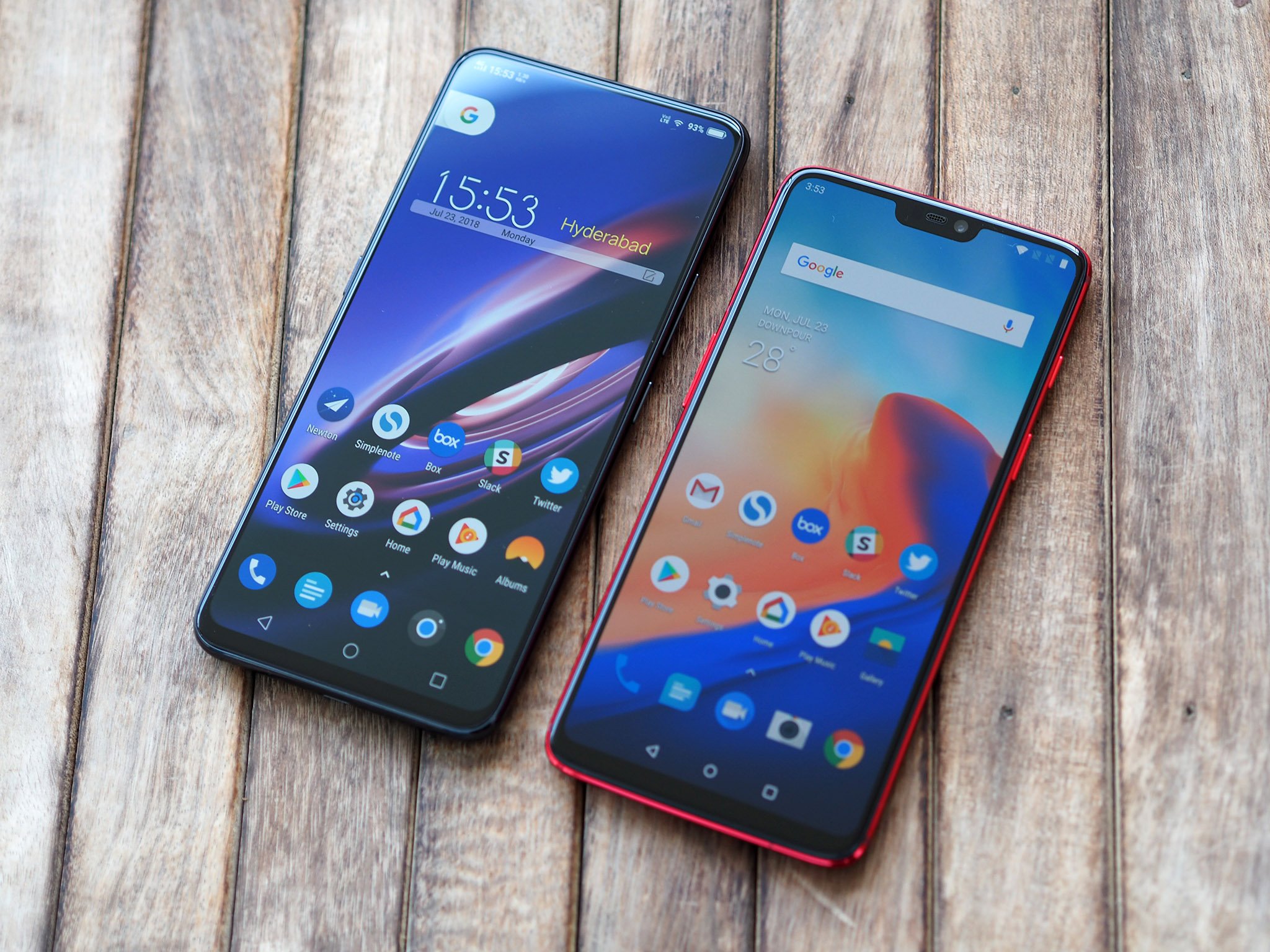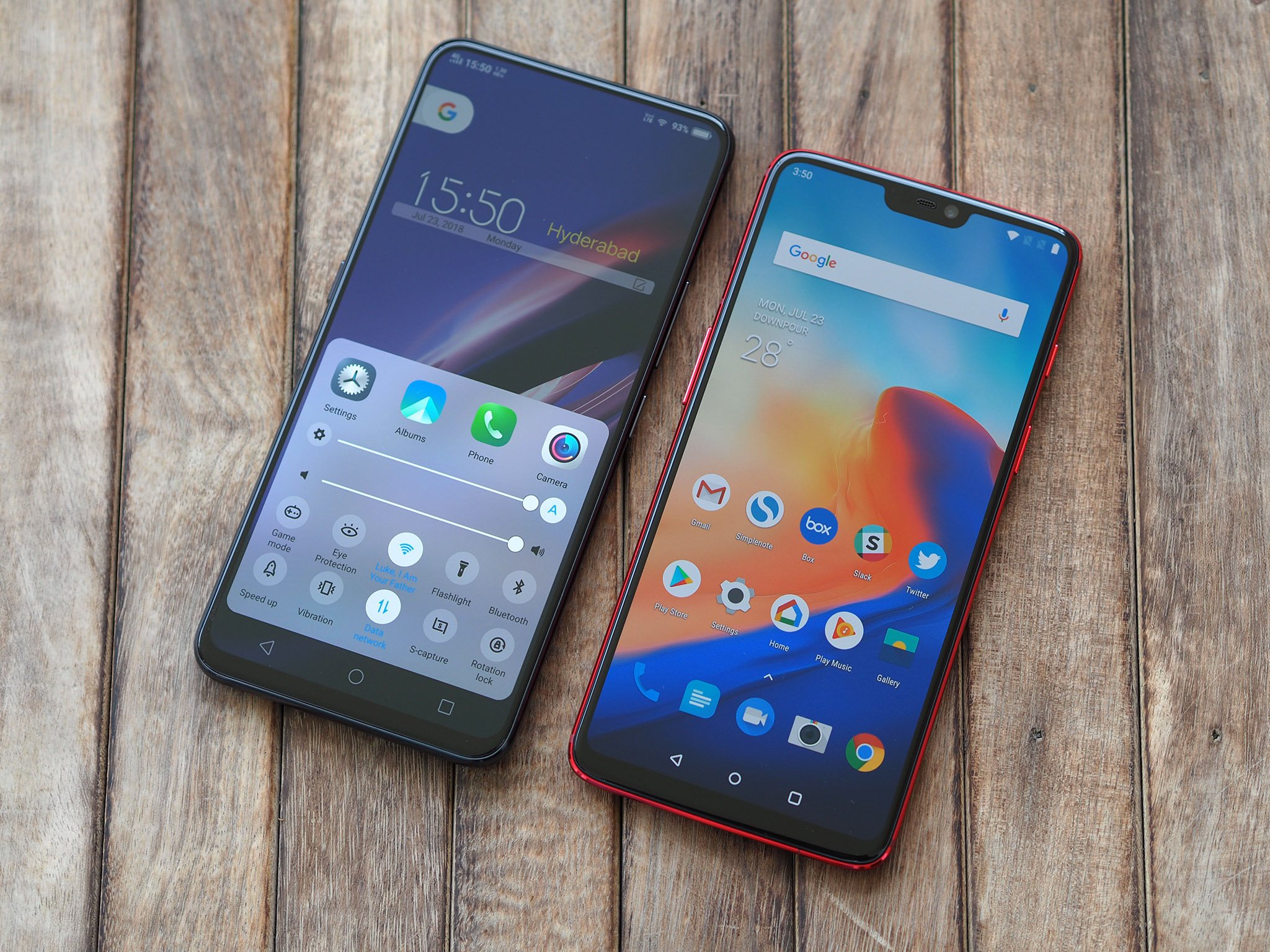The OnePlus 6 is the more practical choice, but the Vivo NEX is so much fun.
With the rise of affordable flagships, there really isn't a compelling reason to shell out over $800 for a phone. The OnePlus 6 reinforces that belief by combining top-notch specs with a clean software interface, making it a great option over the likes of the Galaxy S9.
Vivo isn't a household name in Western markets, but its latest device has the potential to change that. The Vivo NEX is the brand's most ambitious device yet, featuring a motorized slider for the front camera and an in-display fingerprint sensor. The Chinese manufacturer rose up the ranks in China and India on the back of aggressive marketing and a robust distribution network, and is now looking to make its foray into global markets.
The OnePlus 6 is a fan favorite in this segment, and the Vivo NEX packs far more interesting tech and costs just $70 more. Let's see how it fares next to the OnePlus 6 in everyday usage.
Where they're equal
Both the Vivo NEX and OnePlus 6 are evenly matched when it comes to the hardware side of things. You get the Snapdragon 845 on both phones, and you can pick up a variant with 8GB of RAM and 256GB of storage.
They also share a similar design language with a curving back that makes it easier to hold either device. Both devices have glass backs, and while the OnePlus 6 looks particularly stunning in red, the Vivo NEX isn't far behind. The NEX has an array of geometric patterns underneath the glass panel that change hues based on the angle of the light reflecting off the phone's surface. It may not be as bold as the OnePlus 6, but it definitely stands out.
The OnePlus 6 features a 6.28-inch Optic AMOLED panel, whereas the NEX has a larger 6.59-inch Super AMOLED display. There isn't much to differentiate between either device in this regard, as both have displays that offer vibrant colors and excellent contrast levels. The one downside on the NEX is that the sheer size of the display makes it hard to use the phone one-handed.
There really isn't much missing when you look at the basics — Wi-Fi ac, Bluetooth 5.0, and the 3.5mm jack — and the OnePlus 6 builds on that by offering water resistance. There's no IP rating (OnePlus says it's good against "everyday use"), but it should withstand the splash of water. The NEX misses out on that as it's hard to prevent ingress of water when there's a retractable camera involved.
Onto the battery side of things, the NEX has a 4000mAh battery, with the OnePlus 6 sporting a 3300mAh battery. The 6.59-inch display evens out the larger battery, and both phones offer a day's worth of usage comfortably. If you need to top up in a jiffy, Vivo's fast charging standard works at 22W, while Dash Charge's 20W delivers up to a 60% charge in just over 35 minutes.
Vivo NEX to the left, OnePlus 6 to the right.
Like most of the hardware, the camera quality is also on the same level. The NEX does a better job in daylight conditions — managing to capture an impressive amount of detail. Meanwhile, the OnePlus 6 taking better photos in low-light scenarios. The resultant low-light images from the NEX have a lot of noise, and as cool as the front camera is to use, it doesn't do as great a job as the sensor on the OnePlus 6.
What the Vivo NEX does better
The Vivo NEX offers a glimpse into the future of smartphone design. Vivo solved the notch problem quite elegantly by moving the front camera to a motorized slider that only activates when needed, leading to a device that is truly bezel-less. In fact, the only other phone that currently manages to achieve the same effect is OPPO's Find X, which has a mechanical slider for the front and back cameras.
The slider is my favorite thing about the phone. I lost count of the number of times I pulled up the front camera just to see the camera pop up from the top of the phone. The motor doesn't make any sound itself, but you can set one up to add to the occasion — the default sci-fi option is wonderful.
The NEX's retracting camera is just plain cool.
With the camera tucked away underneath the chassis, the front of the device is dominated by a large slab of glass, one that's not marred by any cutouts. The 91.24% screen-to-body ratio and the razor-thin bezels make it a delight to use the screen for gaming or reading text on a daily basis.
Then there's the in-display fingerprint sensor. Vivo claims it is faster, and that has held up in just under a week's worth of usage. It's nowhere as fast as the standard rear-mounted sensor on the OnePlus 6, but it is immeasurably cooler to use.
What the OnePlus 6 does better
OnePlus phones have always featured high-end hardware, but in recent years the company's efforts on the software front with OxygenOS have been just as notable. OxygenOS delivers a clean user interface that stays true to Google's vision of Android, while providing thoughtful customization options in the form of navigation gestures, a reading mode that makes it conducive to read long-form content on the device, and so much more.
OxygenOS is one of the best manufacturer skins around.
The fact that the OnePlus 6 is available as a single SKU makes it easier for the company to manage updates. OnePlus has gotten much better in terms of rolling out timely updates, and the latest OxygenOS 5.1.9 build integrated Google Lens into the main camera app — OnePlus is one of very few companies that offer this particular feature.
On the other hand, Vivo's Funtouch OS is about as close as you can get to an iPhone that's running Android. Most of the interface elements are a faithful imitation of iOS, including the Control Center, multitasking pane, and even the design of the stock apps and icons. Unlike every other Android device, the quick toggles are accessible with a swipe up gesture from the bottom of the phone, which means you'll essentially have to retrain years of muscle memory.
Vivo NEX or OnePlus 6: Which should you buy?
The Vivo NEX manages to stand out in a sea of similar-looking devices. The technological innovations alone make it a device worthy of consideration if you're looking to try out something new. Sure, the software situation is far from ideal, and while you can fix most of the major issues with a launcher like Nova, there's still the fact that most of the core interface elements (like the notification pane) are a poor facsimile of iOS.
Huawei has significantly dialed back on the customization over the course of the last year as the brand made its foray into the UK and other Western markets, but a huge chunk of Vivo's sales still come from China and India. The iPhone is seen as an aspirational device in both markets, and Vivo in previous years was able to sell millions of units by replicating a similar design aesthetic and software experience at a fraction of the cost.
With Vivo now looking to venture forth into markets outside of Asia as well, it will likely start making changes to Funtouch OS to make it a more palatable option for a global audience, which will hopefully include doing something about that name.
Meanwhile, the OnePlus 6 is still a safe choice — you know what you're getting with OxygenOS, and the raw power on offer means the phone will be competitive for at last two years. But if you're looking for a more exciting phone with an astounding bezel-less display and an in-display fingerprint sensor that actually works, the Vivo NEX is a great choice in its own right.
For now, India is one of very few markets where both the OnePlus 6 and the Vivo NEX are up for sale. And because there's no shortage of great options in this category, both devices are aggressively priced. The variant of the OnePlus 6 with 8GB of RAM and 128GB storage retails for ₹39,999 ($585), whereas the Vivo NEX — which also has 8GB of RAM and 128GB of storage — costs ₹44,990 ($655) in India. With just $70 between the two, it makes sense to go with the Vivo NEX just for that wow factor.
from Android Central - Android Forums, News, Reviews, Help and Android Wallpapers https://ift.tt/2Lve18D
via IFTTT











No comments:
Post a Comment